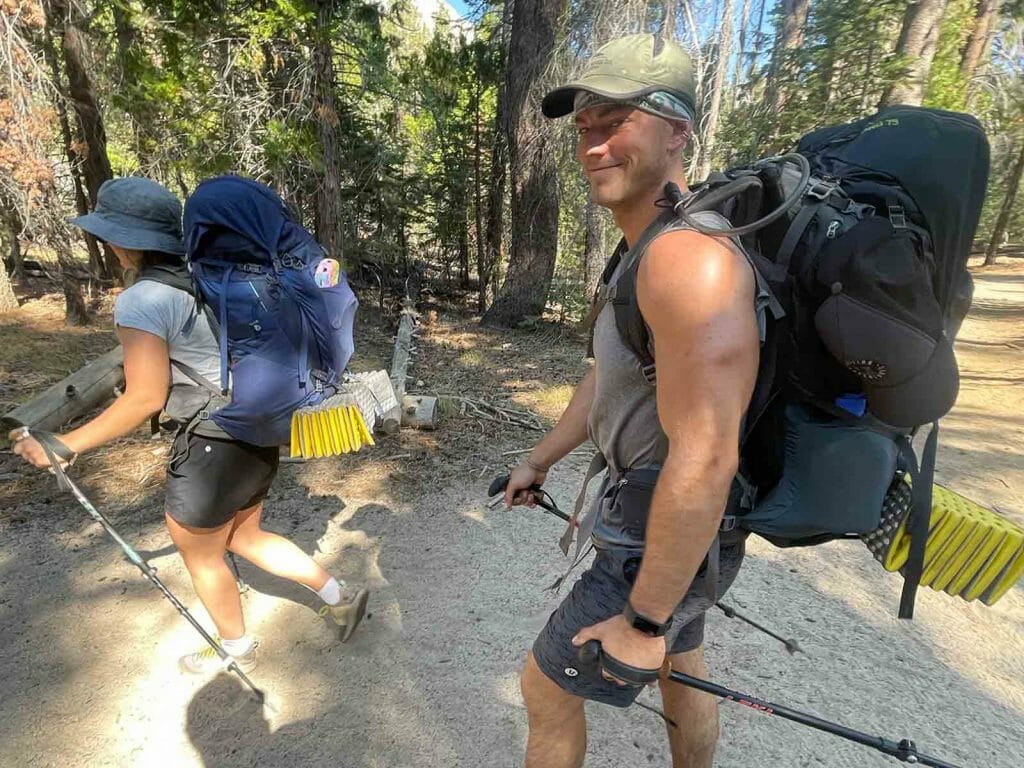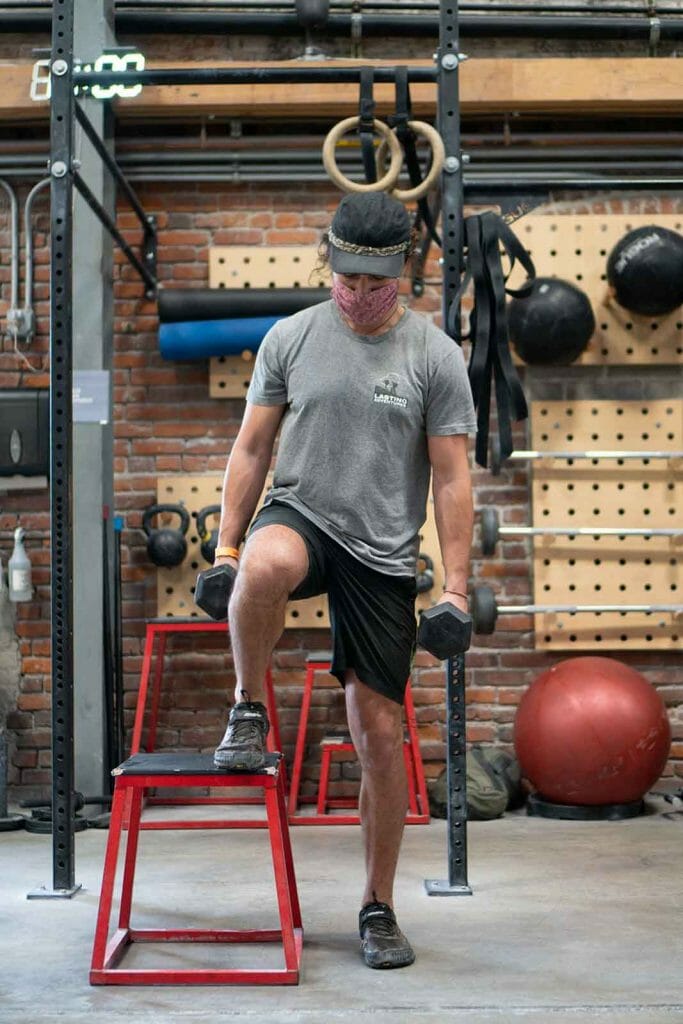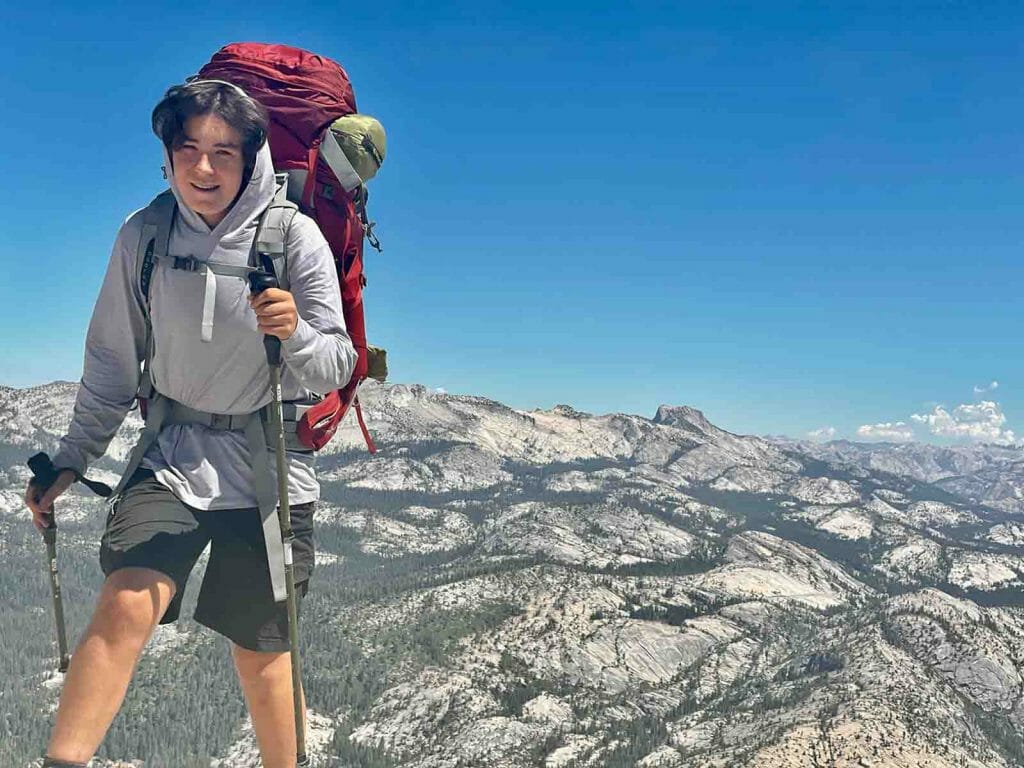How to Train for Your First Backpacking Trip
By LA Guide, Nick Estrada
These days, it seems like everyone has some desire to experience backpacking, and for good reason. Many of our guides have been exploring the backcountry for years, and they wouldn’t want to be anywhere else. The draw to venture into a remote landscape, despite its unfamiliarity, can be undeniable. Equally undeniable can be the physical demand.
Putting in some work before your adventure can help make those miles feel breezy, allowing you to fully enjoy all of what nature has to offer.
We at Lasting Adventures are here to help you get those trail legs moving and start training. Lace up those boots and read on for some tips on how to physically prepare for your first backpacking trip.

Why Do You Want to Go Backpacking?
Before we get into how to train for this first adventure, let’s talk about why you want to backpack in the first place. Everyone enjoys backpacking for different reasons. Ask any of our guides why they enjoy backpacking and you won’t get the exact same answer twice. Identifying your reason or goal is the first step in training for your trip.
Having a clear goal in mind has been proven to increase the likelihood of success.
The important thing when training for a backpacking trip is to keep your reason for stepping on the trail in mind; and one of the best things about backpacking is—it can be literally anything.
- Do you want to go with friends or family?
- Do you want to backpack for physical or mental health?
- Do you enjoy being outside and want to see more beautiful places?
- Do you want to get away from the crowds?
- Do you have an undying desire to dig the perfect cat hole? Well, that’s an entirely different “how to” guide, altogether!
As you progress through your training, you will build confidence and feel more secure when you finally strap up your pack for the first time. The physical training will help prepare you mentally as well. Increasing the time spent preparing will acquaint the body and the mind with the hours you will spend each day backpacking.

General Training Goals
Whether you have hired one of our amazing guides at Lasting Adventures to take you on your first backpacking trip, or you are preparing for a personal trip, here are some general goals everyone should have for their training program:
- Increase major muscle group strength in the legs (including quadriceps, hamstrings, and glutes) and core strength.
- These are the muscles that will be doing much of the “heavy lifting”. Increasing strength will provide you the power and drive to keep moving over elevation gains and losses.
- Build endurance in the aforementioned muscle groups as well as in the shoulders and lower back.
- While muscular strength is important, backpacking is an activity that can last hours a day. Improving your muscular endurance will aid in keeping your body moving all day long.
- Improve balance and stability
- Backpacking involves hiking with added weight, often on uneven terrain. Working on balance and stability will help prevent injury from twisted ankles or unwanted tumbles.
- Improve cardiovascular endurance
- Hiking for miles every day requires a well conditioned cardiovascular system. Don’t neglect to work on this in combination with your strength training.
Keeping these goals in mind, you don’t need to do a complete overhaul of your life to see changes or improvements. Everyone has a busy life and it can be difficult to devote a lot of time to a training program. Small adjustments and simple changes can be an immense help to prepare you for your hike.
Pro Guide Tip: If it is difficult for you to hike on a trail, try walking to the grocery store with a backpack and carrying your groceries home! You can also try taking the stairs more often, walking the dog an extra 10 minutes longer, parking further away from the grocery store to get those steps in, or practicing some yoga or stretching while your morning coffee is brewing. – LA Guide & Program Manager, Kara Maceross
The Training Schedule
Sit down with yourself and map out your average weekly schedule. Look at how much time you are able to devote to training (honestly), and start there.
We recommend trying to find time to train 3-4 days a week at about 30-60 minutes a day.
The more dedicated you are, the more results you will see. The fact that you are reading this article is a great first step and shows dedication to your goal.
If you are limited on time for training, we recommend hiking as much as you are able to. Hiking is the activity most like backpacking, and will prepare you best.
The following is a general schedule for a beginner training program.
This progression will help you ramp up your fitness without overtraining.
- 1 day/Week
- Hike 1 day
- 2 days/Week
- Hike 2 non-consecutive days
- 3 days/Week
- Hike 2 non-consecutive days
- Strength train 1 day
- 4 days/Week
- Hike 2 non-consecutive days
- Strength train 2 non-consecutive days
- 5+ days/Week
- Hike 3 non-consecutive days
- Strength train 2 non-consecutive days
- Rest 2 non-consecutive days

Start training at least 8 weeks prior to your start date.
Gradually increase the difficulty level of your workout by adding more time, distance, weight, or hiking more difficult terrain. Ideally, carry a weighted backpack, similar to what you plan on using, while hiking and increase the weight each week, or try increasing the distance of your cardio days by 10% each week.
It is important that you allow yourself to fully rest at least 1 day a week, to allow for physical and mental recovery.
This training schedule above is mainly geared towards beginners who are looking to establish a baseline and improve their fitness for backpacking. If you already enjoy a personal exercise schedule and you feel confident with it, please continue it! The best exercise for you is whatever you enjoy doing. Consider adding some of the exercises in the link below to help prepare for your backpacking trip.
If you would like some suggestions for a strength training workout, or are interested in adding some exercises we recommend for getting ready to backpack, check out Part II of this post here!
Pro Guide Tip: Start slow so you don’t burn yourself out. A couple days a week is more manageable at first. When you feel confident and successful, increase the days or time you devote to your training. -LA Guide & Adventure Consultant, Will Heaps

Tips for Success
- Remember to be clear with yourself why you want to backpack.
- Consider finding a trainer that keeps your interests in mind
- Find friends or people to train with.
- Having some support can make all the difference for many people. If you feel you could use some support, seek out a club or group on social media, in your community, or ask a friend or family member to join you.
- Reward yourself! This can be a significant change in lifestyle for many people and you deserve to allow yourself some self recognition. Spend some time doing something you enjoy as a reward.
Disclaimer:
This article is not intended to provide medical advice on personal health issues. If you are starting an exercise program or have preexisting health concerns that might be exacerbated by exercise, please consult your physician, dietician, certified personal trainer, or appropriate professional prior to starting a program.
READ MORE
Beginner Family Backpacking Trip: Olympic Ozette Coastal Adventure
Intro to Backpacking For Youth: Yosemite Young Adventurers Program
More Guide Tips: Backpacking With A Baby

